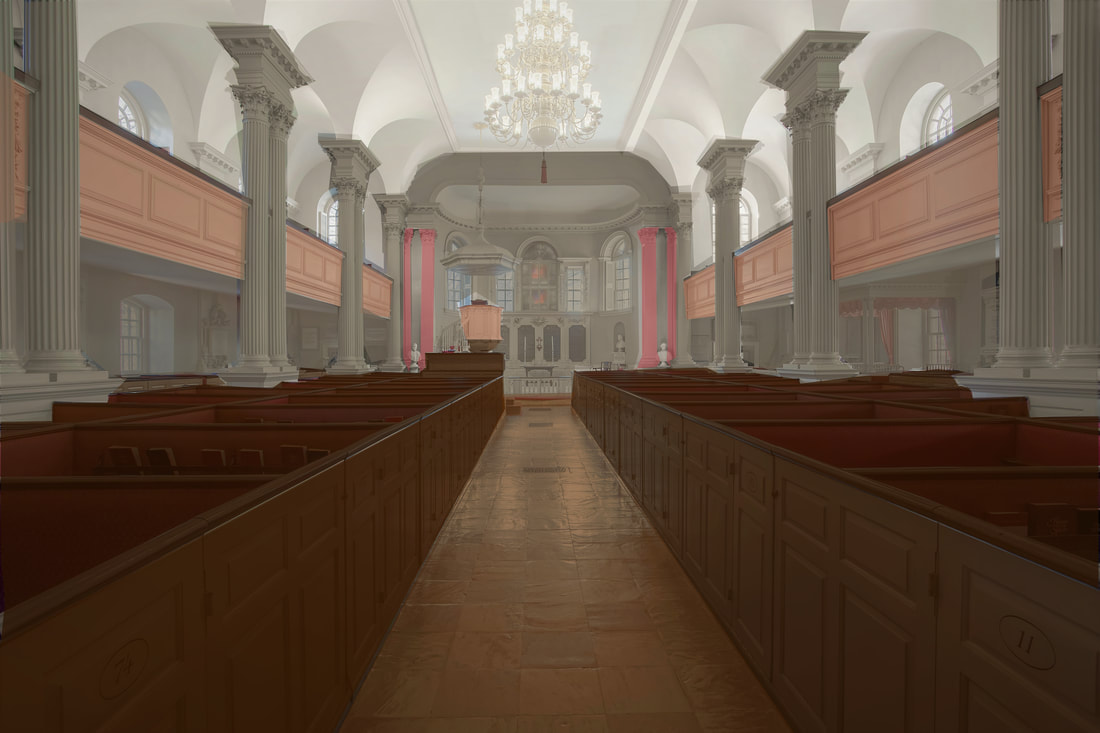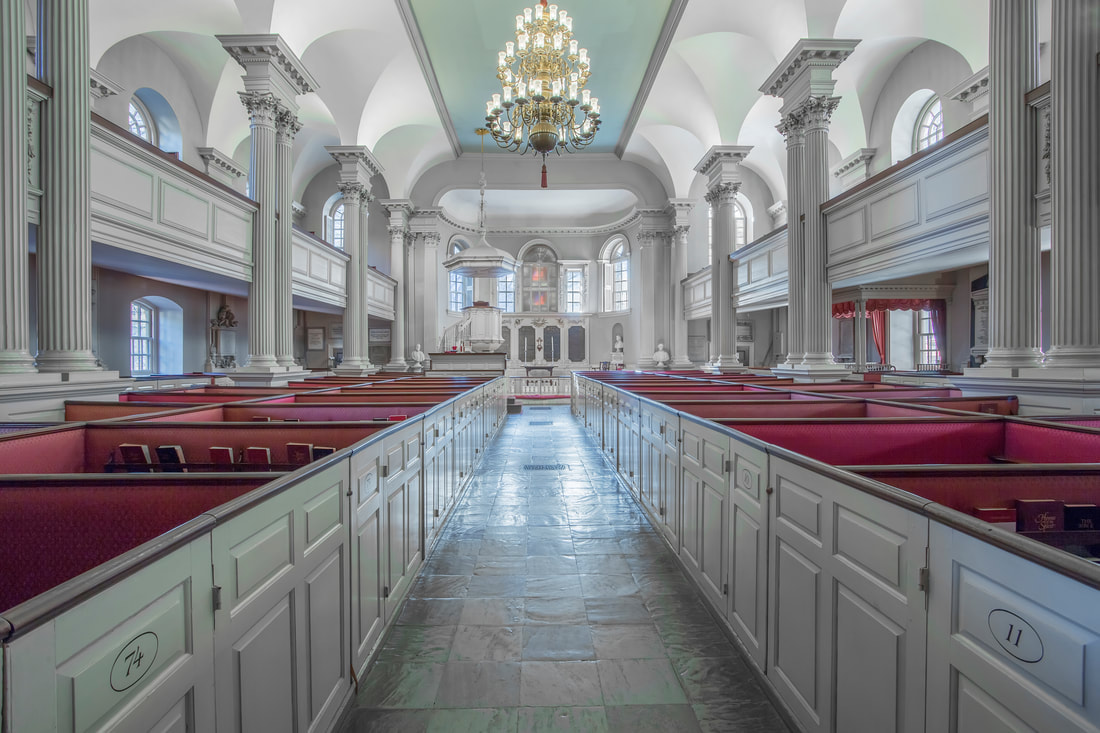|
By Lily Nunno, Historic Site Educator From 1915 and into the early 1920s the interior of King’s Chapel went through a series of changes: the walls were repainted, new floors were put in, the pews were reupholstered, and the stained glass windows were removed. Like many other buildings in Boston and around the United States, the King’s Chapel interior was reimagined to reflect the Colonial Revival aesthetic. This often involved stripping away any Victorian decoration — like floral motifs— and replacing it with a cleaner and simpler look. This renewed interest in the aesthetics of the 18th century initially began with the Centennial celebration in 1876, similar to the fervor during the Bicentennial. This led to an increased desire to preserve colonial buildings and the homes of historical figures. The idea of historic preservation we are familiar with today was fairly new in the late 18th century. In previous decades, historical buildings — like the home of John Hancock in Boston — were torn down. However, these efforts were not necessarily historically accurate. Pale colors were used when reimagining interiors in the Colonial Revival style, though colonial interiors were often colorful. For example, the pilasters at King’s Chapel were faux pink marble and galley fronts were peach during the 18th century, but during the Colonial Revival redesign the interior of the church was whitewashed. This inaccurate view of the Colonial period extended beyond architecture and interior design. As the United States underwent changes, many white, upper-class, and Protestant Americans yearned for a past they saw as superior to their present.
1 Comment
By Mitchell Bryan, Historic Site Educator As a society, we are drawn to the ancient, the historic, and the antique. Places and objects from long ago help us connect with and understand our past, but they also shape the present and inform our future. Although new construction constantly changes the face of our country, people are still driven to preserve history rather than abandon or destroy it. In the United States, historic preservation is conducted at the grassroots level. As a response to urban renewal and the destruction of historic buildings and sites nationwide, people now make the conscious decision every day to preserve places that are important to them, their families, and the broader communities in which they live. They are aided by laws and programs that ensure historic places are maintained for future generations. This is known as the Historic Preservation Movement.
|
King's Chapel History ProgramDive deeper into King's Chapel's 337 year history on the History Program blog. Archives
July 2023
Categories
All
|


 RSS Feed
RSS Feed